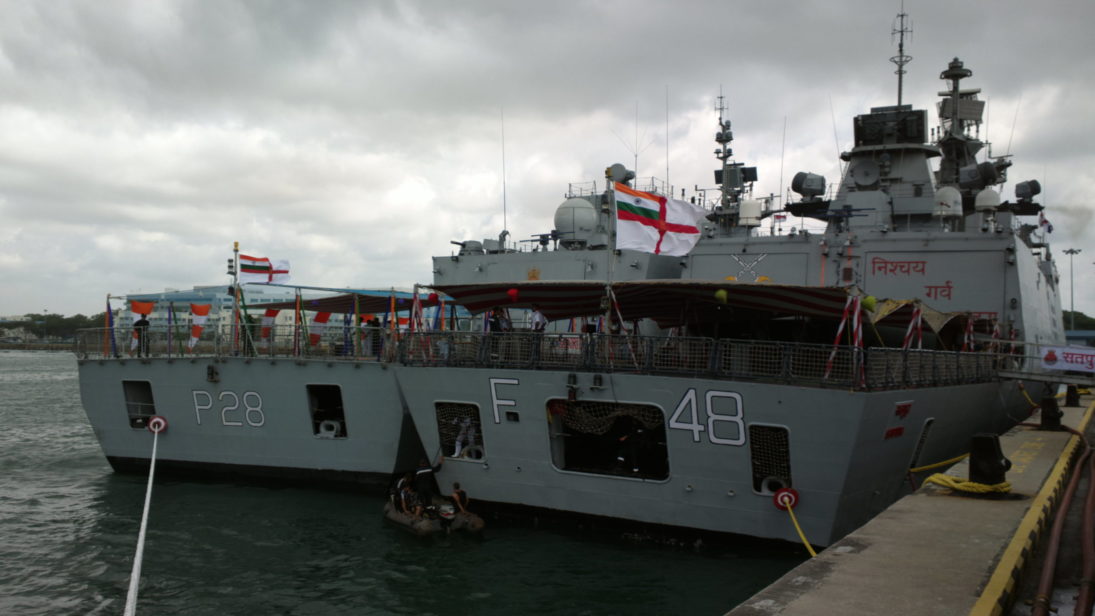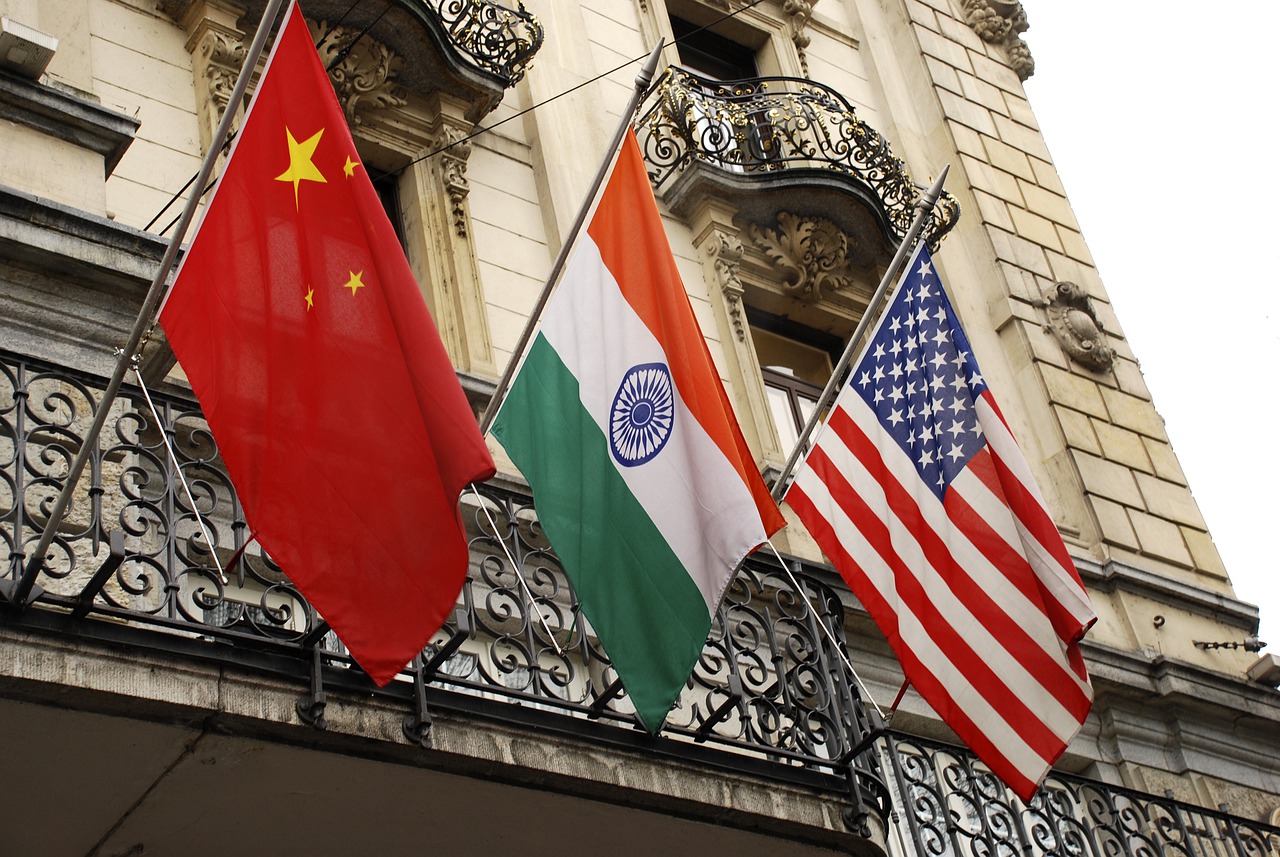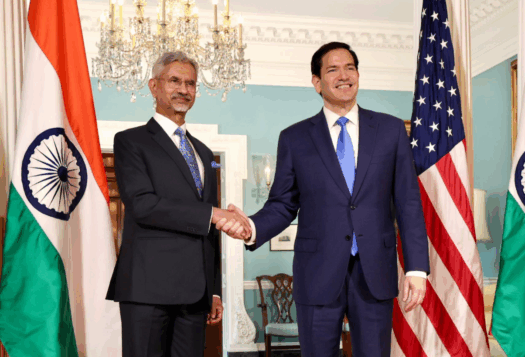
The freedom of the Indian Ocean is critical for global trade and navigation. The region not only allows passage for more than 64 percent of global oil trade and cargo, but is also primarily surrounded by democratic and economically interdependent states. As China works to build strategic assets in the region, the geographic commonality and openness of the Indian Ocean becomes increasingly vulnerable. This is a result of China’s coercive diplomacy and unwillingness to abide by international norms and laws. Chinese survey ships have reportedly been reconnoitring the eastern Indian Ocean to gather information that could be used for military purposes. This comes in the backdrop of worsening India-China relations over land border disputes and sustained US-China conflict.
In such a scenario, India and the United States could work in tandem to secure the Indian Ocean. They can collectively spearhead an Indian Ocean coalition based on shared values and democratic participation, governed by diplomatic representatives of the Indian Ocean Region (IOR) states. This coalition could jointly forge an economic and security partnership in the IOR and defend against an external threat.
Many analysts may disagree with the United States intervening in the IOR, including among some New Delhi and Washington policy circles. These analysts oppose additional U.S. and even Indian defense investment in the region. Regardless, balancing adversaries in the IOR requires greater attention on the part of the United States and India, who can pool resources with to help maintain a free and accessible IOR for all regional players. As part of this, it is essential to build mechanisms that help sustain an order which that enables all states’ development without a dominant player setting the rules.
Increasing Chinese Footprint in IOR
Balancing adversaries in the IOR requires greater attention on the part of the United States and India, who can pool resources with to help maintain a free and accessible IOR for all regional players.
China’s ample offers of infrastructure investment and financial loans are difficult to refuse for many Indian Ocean countries that grapple with domestic issues of unemployment, lack of capital, and climate change. But, as the Southeast Asian example has demonstrated, Chinese debt can cast a shadow over independent foreign policy of states. Laos and Cambodia owe significant debts to China amounting to 45 and 25 percent of their GDPs respectively and have prevented an ASEAN consensus from collectively challenging Beijing’s unreasonable claims in the resourceful South China Sea.
Sri Lanka has steadily pivoted towards China and has had to lease out its Hambantota port because of excessive debt. A study suggests that cumulative Chinese investment in Sri Lanka between 2006 and 2019 amounted to USD $12.1 billion. In 2016, Xi Jinping promised more than USD $20 billion worth of investments to Bangladesh. Causing New Delhi much distress, China beat India for an airport terminal contract in April 2020 to be built in the city of Sylhet, close to India-Bangladesh border. Even the Maldives, which is led by a pro-India government, owes USD $3.1 billion of Chinese debt. Violent protests in 2019 at the thermal power plant at Payra in Bangladesh receiving majority funding from China reflect popular dissatisfaction. Even in Nepal, where popular opinion had been generally pro-China, around 5000 locals staged recent protests against China-sponsored Damak Industrial Park which is largely being seen as unsustainable.
Meanwhile, India’s ongoing conflict with China over shared land borders in eastern Ladakh has killed any pretense of diplomatic harmony. Analyst Sanjay Baru explains that China’s displeasure with India is not merely over land, but more astutely over its economic rise in Asia. China’s constant provocation in the Himalayas forces India to focus and invest in the defense of its northern borders, leaving the vast maritime South exposed. The increased expenditure in India’s defense has also deprived its social and financial sectors of much-needed capital. However, to prevent losing its status as a determinant power in the region, India must adopt a long-term strategy to engage deeper south into the IOR and revive its influence in the littorals.
Increasing militarization of the Indian and Pacific Oceans has brought larger powers into new alliances like the Quad but has forced smaller states to choose sides, leading to endless insecurity. It would be essential for an Indian Ocean coalition to invest in confidence building measures that are aimed at helping its smaller states in achieving their developmental and security goals.

India-U.S. Strategic Partnership
India and the United States are well-positioned to counter the risks posed by China. India has a central position in the geography of the region and has deep historic, cultural, and economic linkages with Indian Ocean states. Meanwhile, the United States has close security relationships with many of these states, a considerable naval presence, and a heavy stake in the freedom of the seas in Indian Ocean. The United States has designated India as its “Major Defense Partner” in its Indo-Pacific Strategy, a position it describes as unique and akin to its closest allies. It also acknowledges India as a “preferred partner” and capable of assuming the role of “Net Security Provider” in the region.
India and the United States could lead a new Indian Ocean Coalition—composed of a group of like-minded IOR countries—functioning as an independent entity for pooling resources, financing essential infrastructure and managing defense in the IOR. The coalition should act as an alternative source of credit and security for the IOR states to prevent dependency on any large power. Multilateral joint military exercises, especially including countries such as Maldives, Seychelles, Madagascar, Comoros and Reunion islands, can help better understand the terrain and train for any unexpected external aggression.
Closer Ties in the Future
It will be useful for India to reconsider its “non-alignment” stance since escalations in its neighborhood are expected to continue, particularly as China’s posture remains aggressive.
The Indian strategic community is wary of advocating an alliance with any major global power, a remnant of its Cold-War-era non-alignment policy. In the present, it has become increasingly difficult for India to maintain this policy. As India is faced with this new reality, it will be useful to reconsider this stance since escalations in its neighborhood are expected to continue, particularly as China’s posture remains aggressive.
India’s active role in the IOR, historical policies, and great power aspirations render any potentially asymmetric alliance (in which India is the secondary power) entirely implausible. New Delhi would instead welcome a hybrid alliance with clearly designated authority in specific areas within the partnership. This could form the foundation for the larger coalition.
The United States would not want to discount the partnership given India’s potential in shaping Indian Ocean politics. Unilateral U.S. actions in the IOR would be inimical to Indian interests. Prior to any further engagements in the IOR, both countries should work bilaterally to create strong mutual confidence. Washington and New Delhi must realize their alignment is a natural course of geopolitics and manifest a security net over the vital Indian Ocean.
***
Image 1: Wikimedia Commons
Image 2: Pixabay


